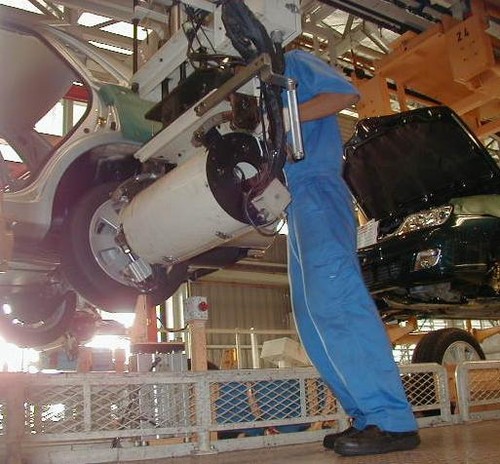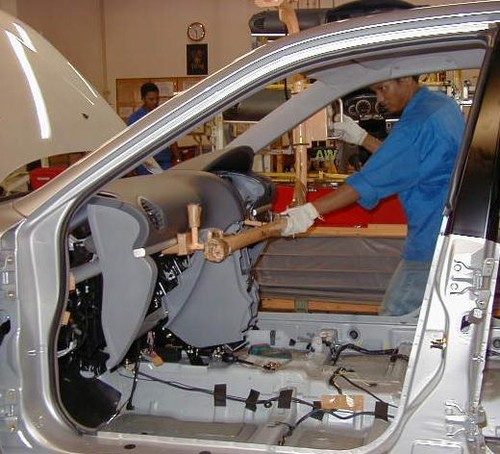MVF Page 2
Ideally, the new factory at Proton City would have been designed for modular assembly but as it was not going to be built for a while, an alternative was required and this was to build a separate facility in Shah Alam. Fortunately, the 942,000 sq. metre site still had some space left on the northwestern quadrant even though four additional facilities had been built on it since 1985.
The new facility was to be known as the ‘Medium Volume Factory’ (MVF) and occupied some 53,200 sq.metres of land on the western side of the complex with a building 290 metres wide and 140 metres long (40,600 sq. metres), and with an internal height of 10 metres. Proton spent RM400 million to build this additional production facility.
For a start, the MVF has a capacity of 50,000 units a year but this could be increased to 80,000 units very quickly with an extra RM50 million investment. Providing consultancy services to Proton in the design and layout of the MVF was a leading Japanese automaker (not Mitsubishi Motors, surprisingly) with a production system that is widely recognised as being among the most efficient in the world. Construction was carried out during the period of economic recession and there was a tight deadline which had to coincide with the launching of the Waja in mid-2000. So, in a way, Proton not only developed the Waja but also set up a plant specially to make it.
The MVF has three main sections: the Body Shop where the bodies are welded together by 27 robots; the Paint Shop where two robots handle painting; and the Final Assembly Line which has only two robots as this process requires a high degree of flexibility (to handle variations in equipment levels) which is better managed by humans.
Lean Manufacturing Systems
Several processes have been incorporated in the assembly process to achieve a lean manufacturing environment that aims for a high Operation Ratio of 95% and Built-Up Quality of less than 3 defects/car. Among the processes are the Short Line Management System where the assembly line is grouped into six separate lines – Trim Line 1, Chassis Line 1, Chassis Line 2, and Final Line 1, Door Sub-Assembly and Engine Sub-Assembly Line.
Work teams at each individual line will be responsible for the quality of their output and are to prevent cars with problems or defects from moving to the next process line. An inspection and repair station is installed at the end of each line to fix any problems. A buffer in between each line – equivalent to 3 minutes of stoppage – is an important feature that allows each station worker to stop the line if needed to make adjustments to their work. This is known as the ANDON line system and any time there is a stoppage, the location is immediately identified on a board overhead.

























